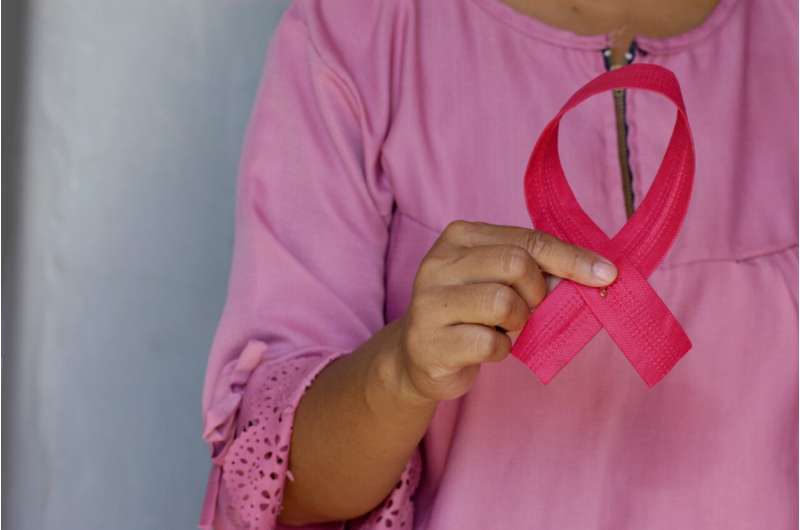This article has been reviewed according to Science X's editorial process and policies. Editors have highlighted the following attributes while ensuring the content's credibility:
fact-checked
reputable news agency
proofread
When a lump is more than a lump?

A breast self-exam is an inspection of your breasts that you do on your own. To help increase your breast awareness, you use your eyes and hands to regularly observe the look and feel of your breasts.
Many breast changes detected during a breast self-exam have benign causes. This means they are not caused by cancer. Other changes may signal something serious like breast cancer.
A breast self-exam that you do for breast awareness helps you understand the usual look and feel of your breasts.
These self-exams aren't as effective as routine mammograms in detecting cancer or improving survival for women who have breast cancer.
Still, many health care professionals believe there is value in women becoming familiar with their breasts so they understand what's typical for them and can promptly report changes to their health care teams.
What does a breast lump feel like?
A breast lump is a growth of tissue that develops within your breast. It may be described as a mass, growth, swelling, thickness or fullness. A breast lump can vary in the way it looks and feels.
Many women find lumps or changes in their breasts at various points in their menstrual cycles. These are typical changes that occur, and finding a change or lump in your breast is not a reason to panic. Breasts often feel different in different places. The look and feel of your breasts will also change as you age.
Watch for these breast changes:
- A distinct lump with definite borders.
- A thickened, slightly more prominent area in your breast that's different from surrounding breast tissue.
- Breast pain or tenderness.
- Nipple changes, such as a nipple pulled inward (nipple inversion) or spontaneous fluid discharge from your nipple.
- One breast that's noticeably larger than the other.
- Other breast changes, such as redness, dimpling or pitting of the skin.
Sometimes, a breast lump is a sign of breast cancer. That's why you should seek prompt medical evaluation. However, many breast lumps result from noncancerous (benign) conditions like benign breast disease, especially in women under 50.
Your family's cancer history can affect your cancer risk and the chance that a lump might be a more serious concern.
What causes breast lumps?
A breast lump can develop as a result of conditions such as:
- Breast cancer
- Breast cysts
- Fibrocystic breasts
- Hamartoma, a noncancerous tumor in the breast
- Injury or trauma to the breast
- Mastitis
Can a mammogram determine what is causing a breast lump?
In some cases, yes. A mammogram can help your health care team determine the cause of the lump and if additional treatment is necessary. They also may recommend additional tests and procedures, such as ultrasound or biopsy.
Early detection and routine mammogram screenings are key to reducing death from breast cancer. That's why Mayo Clinic Health System recommends that women with an average risk of breast cancer start screening mammograms yearly at 40. Average risk of breast cancer means women with no family history of breast cancer and no other risk factors for breast cancer. Women with a family history or other risks may need earlier or more frequent mammograms at the guidance of their health care team.
When should a breast lump be evaluated?
Any breast symptoms, such as a breast lump, nipple discharge or breast pain, should be evaluated by a medical professional.
Schedule an appointment with your health care team if you notice:
- A breast lump is new or unusual and feels different from the surrounding tissue or tissue in your other breast.
- A breast lump doesn't go away or gets bigger after your next menstrual period.
- A breast lump changes and becomes bigger, firmer or more defined from surrounding breast tissue, especially if you have not had it examined by a health care professional previously.
- Bloody, possibly spontaneous, discharge from your nipple.
- Skin changes on your breast, such as redness, crusting, dimpling or puckering.
- Your nipple is turned inward (inverted), although it isn't typically positioned that way.
Your health care team may recommend additional tests and procedures to determine the cause of your breast changes.
Bongi Rudder, M.B.B.S., is an oncologist with Mayo Clinic Health System in Mankato and New Prague, Minnesota.
2023 Mayo Clinic News Network. Distributed by Tribune Content Agency, LLC.

















